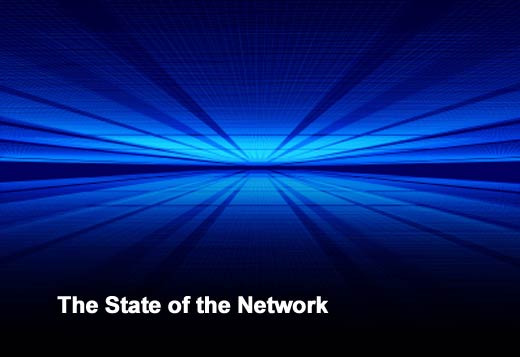Network Instruments, a business unit of JDSU, recently released the results of its Seventh Annual State of the Network Global Study. Highlighted in the survey taken by 241 network professionals is continuing uncertainty surrounding the emerging software-defined networks (SDN), which many network administrators view as a “road trip without a map.” While 12 percent of network managers and engineers regard SDN as critical, the rest seem divided as to whether it is important at all, with more than 80 percent of respondents viewing SDN as “unimportant” or just wanting to “ride out the hype.”
Click through for findings from a state of the network study, conducted by Network Instruments, a business unit of JDSU.
What’s trending?
The results suggest network teams are investigating and adopting emerging technologies like SDN and 40 gigabit (Gb) ethernet networks on a limited basis, while technologies such as unified communications (UC) and bring your own device (BYOD) are approaching the threshold of mainstream adoption, tipping in at more than 50 percent implementation by year’s end.
Study highlights
- SDN is emerging in the enterprise: One in five of the organizations surveyed plan to have deployed SDN by the end of 2014.
- Network experts are having trouble defining SDN: Nearly 40 percent of respondents consider SDN to be undefinable.
- Network bandwidth continues to surge: By 2015, 25 percent of organizations expect their bandwidth demand to grow 51 to 100 percent, while 12 percent predict growth of more than 100 percent.
- Growing 40 Gb adoption: By 2015, 25 percent will have implemented 40 Gb data rates in their enterprise networks.
Study highlights continued
- Unified communications (UC) have gone mainstream: UC apps have gone mainstream, including videoconferencing, with 63 percent of respondents having implemented it in 2014 compared to only 25 percent in 2009.
- User experiences with UC are unclear: More than 50 percent of respondents indicated a lack of visibility into the user experience as their top UC management challenge.
- Application angst: 74 percent cited their top application troubleshooting challenge is how to determine the root-cause of network performance problems.
“As with any emerging technology, IT management is grappling over the definition of SDN, as well as its benefit and importance to the organization,” said Brad Reinboldt, manager of Product Marketing for Network Instruments. “As network professionals come to terms with SDN and its relevance, they continue to juggle multiple major initiatives including Big Data, UC, BYOD and 40 Gb deployment. As IT continues to roll out bandwidth-hungry applications to keep pace with the needs of a global, mobile workforce, they lag in the visibility and troubleshooting technologies needed to monitor their burgeoning networks.”
Software-defined networks
With a wide range of definitions for SDN, the top drivers behind SDN adoption were the need to improve the network’s ability to dynamically adapt to changing business demands (48 percent) and to deliver new services faster (40 percent). Others indicated lowering operating expenses, decreasing capital expenses, improving the ability to provision network infrastructure, and designing more realistic network infrastructures as reasons behind SDN deployment.
Unified communications
Significant adoption of the many communication applications making up UC have occurred during the past five years as 71 percent have now deployed Voice over IP (VoIP), compared to 45 percent in 2009. Likewise, 63 percent have rolled out videoconferencing compared to 27 percent in 2009. Nearly half now use instant messaging compared to only 27 percent in 2009.
While UC applications can now be considered mainstream, adoption of application monitoring lags behind. More than 50 percent of the participants indicated that lack of visibility into user experience was their top UC management challenge. This was followed by difficulties assessing bandwidth usage at 39 percent, and an inability to assess UC deployment impact by 38 percent of respondents.
Application angst
In terms of organizational bandwidth demand, three-quarters of respondents expect increases of up to 50 percent in 2014. In 2015, this bandwidth surge continues unabated with one-quarter of respondents expecting demand to increase between 51 percent to 100 percent, and 12 percent of respondents forecasting their organization’s demand to exceed 100 percent. As applications and networks grow in complexity, the ability to resolve performance problems worsens: 74 percent indicated that their largest application troubleshooting challenge was isolating the source of the problem, a 6 percent rise over last year’s results.









